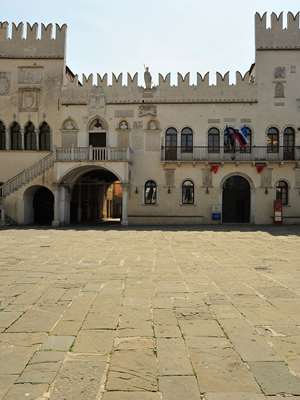The Praetorian Palace with its external staircase, two towers, a serrated finish and crests on the facade represents the most important profane structure in Koper.
The Praetorian Palace in Koper

Salt trade, production and sale, of which Kopar had the monopoly in Istria back in 1182, made it prosper. In the 16th century, the town became an administrative, judicial and tax centre of Venetian Istria.
The town on the 'top of Istria' has a dense town center with a network of narrow streets which radiate toward the main square with the Cathedral. Despite its mediaval structure, Kopar owes its appearance to Renaissance and Baroque renovations. Salt trade, production and sale, of which Kopar had the monopoly in Istria back in 1182, made it prosper. In the 16th century, the town became an administrative, judicial and tax centre of Venetian Istria.